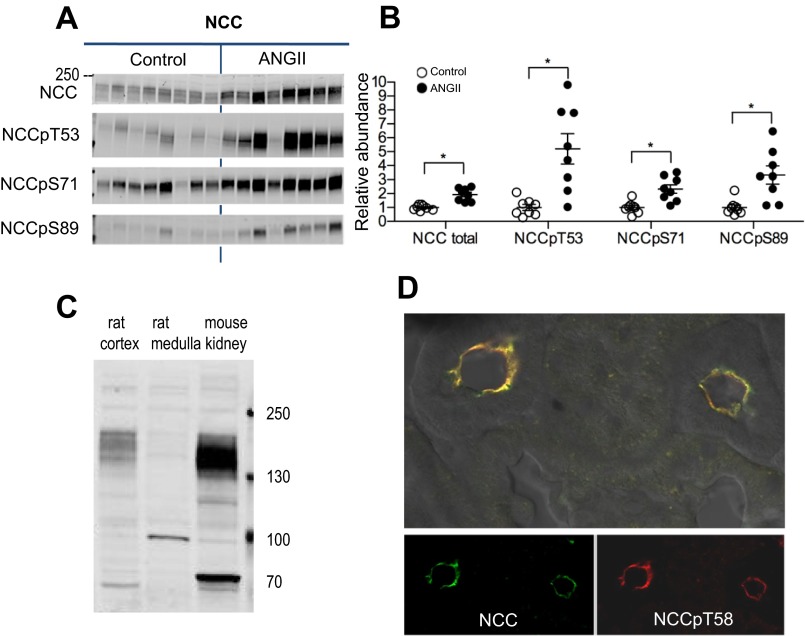Fig. 5.
Chronic ANG II (400 ng·kg−1·min−1) infusion increases NCC abundance and phosphorylation. A: immunoblots of NCC total, NCCpT53, NCCpS71, and NCCpS89 in renal cortex of rats infused with either vehicle (control) or ANG II (n = 8 each). Protein per lane in Table 1. B: relative abundance is displayed as individual records with means ± SE. Density values were normalized to mean density of control group. *P < 0.05. C: characterization of a new anti-NCC antibody produced in rabbits against NH2-terminal amino acids 74–96 (PGEPRKVRPTLADLHSFLKQEG). Forty micrograms of homogenate from untreated rat cortex (contains NCC and NKCC), medulla (contains NKCC), and mouse whole kidney were resolved and probed with the new anti-NCC diluted 1:5,000. The antibody detects a band around 150 kDa in cortex and very little in medulla, indicating that it detects NCC and not NKCC2. The band at 100 kDa in the medulla is nonspecific since there should be no NCC in the medulla, and the band at 70 kDa in mouse is unknown. D: frozen slice of renal cortex was probed with the new anti-NCC antibody as well as an antibody directed to NCCpT58. The antibodies both detect apical NCC, with little nonspecific labeling. Antibody labeling specifics provided in Table 1.

